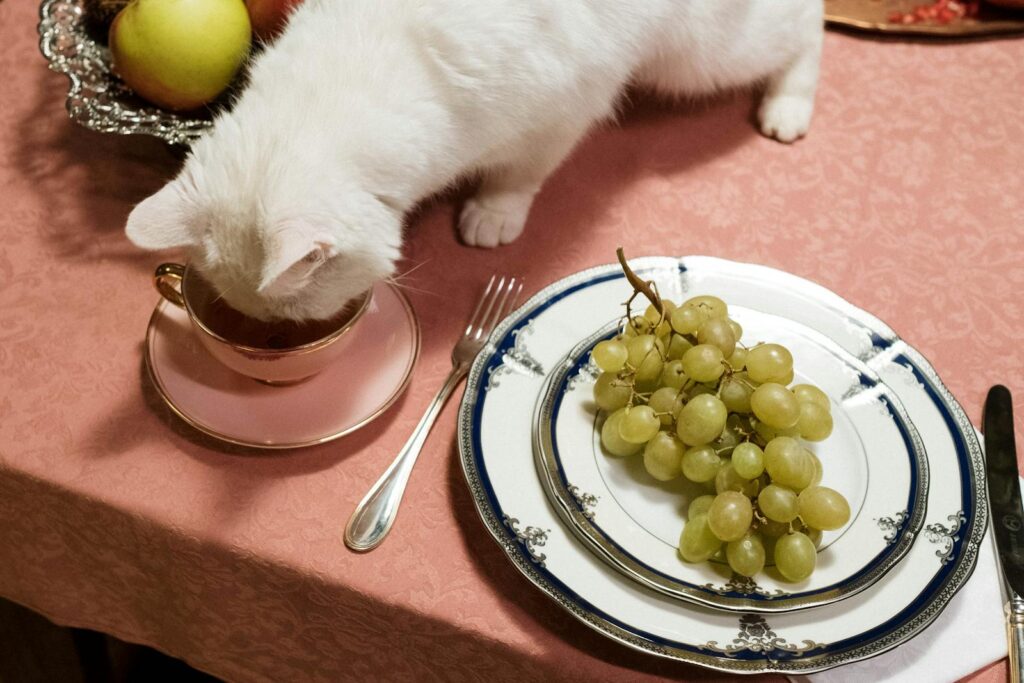Are you looking to provide the best possible nutrition for your feline friend? Making organic cat food at home could be the perfect solution. Not only can you control the ingredients, but you’ll also ensure that your cat is eating wholesome, chemical-free food. Home-prepared organic meals can improve your cat’s health, boost its energy levels, and even increase its longevity.
By understanding your cat’s dietary needs and selecting high-quality, organic ingredients, you can prepare meals that are both delicious and nutritious. And the best part? It’s easier than you might think!
- Ensure proper nutrition by choosing the right ingredients.
- Avoid harmful preservatives and additives.
- Boost your cat’s overall health and happiness.
Ready to get started? Let’s dive into how you can make organic cat food at home, step by step!
What are the essential nutrients for cats?
Cats are obligate carnivores, meaning they require a diet primarily composed of meat. Protein is a crucial nutrient for cats, providing essential amino acids like taurine, arginine, and methionine, which are vital for various bodily functions including vision, heart health, and immune system support. Fats are another essential nutrient for cats, offering a concentrated source of energy. They also provide essential fatty acids like arachidonic acid and omega-3 and omega-6 fatty acids, which are important for skin health, coat condition, and overall cellular function.
Vitamins are necessary for cats to maintain optimal health. Key vitamins include Vitamin A for vision and immune function, Vitamin D for calcium absorption and bone health, and B vitamins for energy metabolism and nervous system health. Unlike some animals, cats cannot convert beta-carotene to Vitamin A, so they must obtain it directly from animal sources. Minerals are also essential for cats, contributing to various physiological processes. Important minerals include calcium and phosphorus for bone health, magnesium for muscle function, and potassium for nerve function. Trace minerals like zinc, selenium, and iron are also crucial for enzyme function and overall health.
Water is often overlooked but is a vital nutrient for cats. Proper hydration is essential for kidney function, digestion, and overall cellular health. Cats have a low thirst drive and often rely on their food for moisture, making it important to include wet or moist foods in their diet.
| Nutrient | Primary Source | Importance |
|---|---|---|
| Protein | Meat, Fish, Eggs | Essential for muscle development and repair |
| Fat | Animal Fats, Fish Oil | Provides energy and supports cell function |
| Vitamins | Liver, Lean meats | Vital for immune function and skin health |
| Minerals | Bone Meal, Organ Tissue | Essential for bone health and enzymatic functions |
| Water | Wet Foods, Fresh Water | Critical for hydration and organ function |
Which ingredients are considered organic and safe for cats?
Organic ingredients are those that are grown without the use of synthetic pesticides, fertilizers, genetically modified organisms (GMOs), or irradiation. When choosing ingredients for homemade organic cat food, it’s crucial to ensure they meet these standards to maintain the organic integrity of the food. Organic meats such as chicken, turkey, and beef are excellent protein sources for cats. These meats should come from animals raised without antibiotics or growth hormones and fed organic feed. Always opt for high-quality cuts and avoid processed meats.
Organic vegetables like carrots, peas, and spinach can be included in small amounts. These vegetables should be free from pesticides and other chemicals. They provide essential vitamins and minerals but should not make up a large portion of the diet, as cats are obligate carnivores. Organic grains such as brown rice and quinoa can be added in moderation. These grains should be whole and unprocessed, providing a good source of fiber and carbohydrates. However, some cats may have sensitivities to grains, so it’s important to monitor your pet’s reaction.
Organic eggs are another safe and nutritious option. They are a good source of protein and essential fatty acids. Ensure the eggs come from free-range chickens that are fed an organic diet. Organic fish like salmon and sardines can be included occasionally. These should be wild-caught rather than farmed to avoid exposure to antibiotics and other chemicals. Fish provides essential omega-3 fatty acids, which are beneficial for a cat’s coat and overall health.
Organic dairy products such as plain yogurt or cottage cheese can be offered in small quantities. These should be free from artificial additives and hormones. However, many cats are lactose intolerant, so it’s important to introduce dairy slowly and watch for any adverse reactions. Organic herbs like catnip, parsley, and rosemary can be used to enhance flavor and provide additional nutrients. These herbs should be grown without synthetic chemicals and can offer various health benefits, such as aiding digestion and providing antioxidants.
How do you balance homemade cat food?
Balancing homemade cat food requires a thorough understanding of feline nutritional needs. Cats are obligate carnivores, meaning their diet must be primarily composed of animal-based proteins. Ensuring that your homemade cat food contains high-quality meat sources, such as chicken, turkey, or fish, is essential for providing the necessary amino acids, particularly taurine, which is vital for heart and eye health. In addition to protein, cats need a balanced amount of fats, which are crucial for energy and the absorption of fat-soluble vitamins. Including sources of healthy fats like fish oil or chicken fat can help meet these requirements. However, it’s important to avoid excessive fat, as it can lead to obesity and other health issues.
Vitamins and minerals are also critical components of a balanced diet. Cats require specific vitamins such as A, D, E, and B-complex vitamins, as well as minerals like calcium, phosphorus, and magnesium. These nutrients can be provided through a combination of meat, organ meats (like liver and kidney), and bone meal. However, it’s crucial to avoid over-supplementation, which can be harmful. Fiber, while not a major component of a cat’s diet, can aid in digestion and prevent constipation. Small amounts of pureed vegetables like pumpkin or carrots can be included in the diet to provide fiber. However, it’s important to remember that cats do not require large amounts of plant-based foods, and these should only be a minor part of their diet.
Hydration is another key aspect of a balanced diet. Cats often do not drink enough water on their own, so incorporating moisture-rich foods like wet cat food or adding water or broth to their meals can help ensure they stay hydrated. This is particularly important for urinary tract health. Finally, consulting with a veterinarian or a pet nutritionist is highly recommended when preparing homemade cat food. They can provide guidance on the appropriate proportions and ingredients to ensure that your cat’s diet is nutritionally complete and balanced. Regular health check-ups can also help monitor your cat’s health and make any necessary dietary adjustments.
What equipment is needed to make cat food at home?
To make organic cat food at home, you’ll need a high-quality blender or food processor. This equipment is essential for pureeing meats, vegetables, and other ingredients into a smooth, easily digestible consistency for your cat. A sharp kitchen knife and a sturdy cutting board are crucial for chopping and preparing raw ingredients. These tools ensure you can cut meats and vegetables into appropriate sizes before blending or cooking.
A reliable kitchen scale is important for accurately measuring ingredients. Proper portion sizes are vital for maintaining the nutritional balance of your homemade cat food. You’ll need a set of mixing bowls in various sizes. These bowls are useful for combining different ingredients and mixing them thoroughly before cooking or blending. A large pot or slow cooker is necessary for cooking certain ingredients, such as meats and grains, to ensure they are safe and digestible for your cat.
A meat grinder can be very useful if you prefer to grind your own meat. This ensures the meat is fresh and free from any unwanted additives. Storage containers with airtight lids are essential for keeping your homemade cat food fresh. These containers allow you to store portions in the refrigerator or freezer for future use. A set of measuring cups and spoons is important for ensuring you add the correct amounts of each ingredient. This helps maintain the nutritional balance and consistency of the cat food.
A thermometer is useful for checking the temperature of cooked ingredients. Ensuring meats are cooked to the right temperature is crucial for food safety. A fine mesh strainer or sieve can be helpful for draining excess liquid from cooked ingredients, ensuring the final product has the right texture and consistency for your cat.
Some organic cat food with making process
Preparing organic cat food at home can be both budget-friendly and beneficial for your feline friend. Here are some simple yet nutritious recipes that you can whip up with ease:
1. Chicken and Vegetables Delight
This recipe is packed with protein and essential vitamins. Perfect for a balanced diet!
- Ingredients:
- 1 cup of organic chicken breast, cooked and finely diced
- 1/4 cup of organic carrots, steamed and mashed
- 1/4 cup of organic peas, steamed
- 1/2 teaspoon of fish oil
- Instructions:
- Mix the cooked chicken, carrots, and peas in a large bowl.
- Add the fish oil and mix thoroughly to ensure even distribution.
- Let it cool before serving it to your cat.
- Store any leftovers in an airtight container in the refrigerator for up to three days.
2. Tuna and Pumpkin Mash
Great for cats with sensitive stomachs, this recipe is gentle and easily digestible.
- Ingredients:
- 1 can of organic tuna in water, drained
- 1/4 cup of organic pumpkin puree
- 1 tablespoon of organic cat grass, finely chopped (optional)
- Instructions:
- Combine the tuna and pumpkin puree in a bowl.
- Mix in the cat grass if using, and blend well.
- Serve immediately or refrigerate in an airtight container for up to two days.
3. Beef and Spinach Supreme
This recipe provides a hearty meal rich in iron and protein.
- Ingredients:
- 1 cup of organic lean beef, cooked and minced
- 1/4 cup of organic spinach, steamed and finely chopped
- 1 egg yolk, cooked
- 1/2 teaspoon of olive oil
- Instructions:
- In a bowl, mix the minced beef, spinach, and egg yolk.
- Drizzle with olive oil and stir until well combined.
- Allow it to cool before serving.
- Store any remaining food in the refrigerator for up to three days.
Creating organic homemade cat food ensures that your cat eats high-quality ingredients, making it a viable alternative to commercial pet foods. Always consult with your vet when switching diets to ensure all nutritional needs are met.
Are there any common mistakes to avoid?
One common mistake to avoid is using ingredients that are toxic to cats. Foods like onions, garlic, chocolate, and grapes can be harmful or even fatal to cats. Always research and ensure that every ingredient you use is safe for feline consumption. Another mistake is not balancing the nutrients properly. Cats require a diet high in protein and specific nutrients like taurine, which is essential for their heart and eye health. Make sure to include a variety of protein sources and consult with a veterinarian to ensure the diet meets all nutritional needs.
Overlooking the importance of portion control can also be problematic. Feeding your cat too much or too little can lead to obesity or malnutrition. Follow guidelines for appropriate portion sizes based on your cat’s age, weight, and activity level. Using raw ingredients without proper handling can pose a risk of bacterial contamination. If you choose to include raw meat in your cat’s diet, ensure it is fresh and handle it with care to avoid the spread of harmful bacteria.
Failing to transition your cat gradually to a new diet can cause digestive upset. Introduce the homemade organic food slowly, mixing it with their current food and gradually increasing the proportion over a week or two to allow their digestive system to adjust. Neglecting to include variety in the diet can lead to nutritional deficiencies. Cats can become bored with the same food and may not get all the nutrients they need. Rotate different protein sources and include a mix of vegetables and supplements to keep their diet balanced and interesting.
Not consulting with a veterinarian before making significant changes to your cat’s diet is a major oversight. A vet can provide valuable guidance on nutritional requirements and help you avoid potential health issues related to an imbalanced diet.
Making homemade organic cat food can be a rewarding experience that ensures your feline friend is getting high-quality nutrients tailored to their specific needs. By being mindful of their essential dietary requirements, using safe and organic ingredients, and avoiding common mistakes, you can help maintain your cat’s health and happiness. Remember, no matter how well-intentioned, homemade cat food should always be discussed with and approved by a veterinarian.



